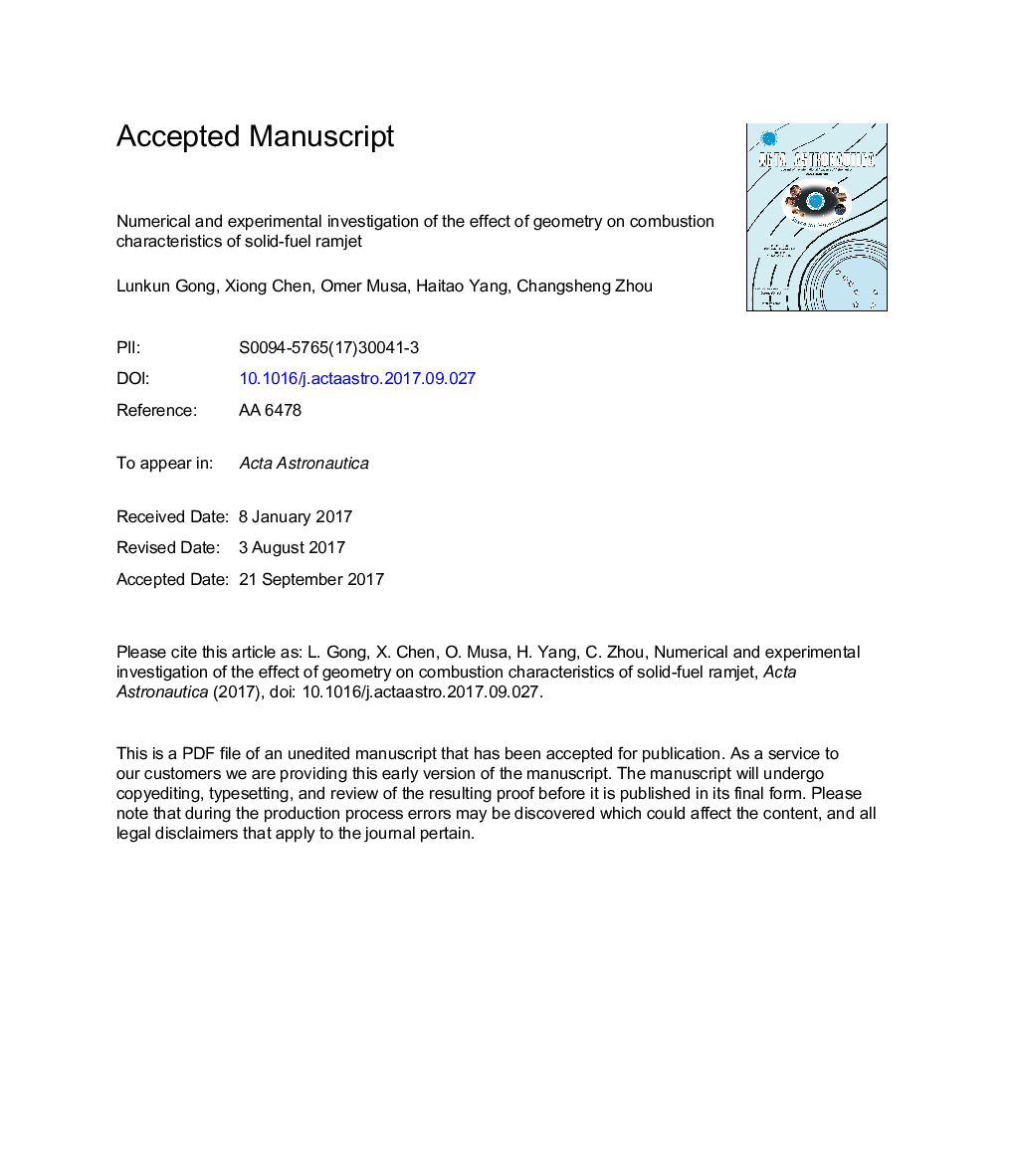| کد مقاله | کد نشریه | سال انتشار | مقاله انگلیسی | نسخه تمام متن |
|---|---|---|---|---|
| 5472073 | 1519913 | 2017 | 27 صفحه PDF | دانلود رایگان |
عنوان انگلیسی مقاله ISI
Numerical and experimental investigation of the effect of geometry on combustion characteristics of solid-fuel ramjet
ترجمه فارسی عنوان
بررسی عددی و تجربی اثر هندسه بر ویژگی های احتراق سوخت جامد
دانلود مقاله + سفارش ترجمه
دانلود مقاله ISI انگلیسی
رایگان برای ایرانیان
کلمات کلیدی
موضوعات مرتبط
مهندسی و علوم پایه
سایر رشته های مهندسی
مهندسی هوافضا
چکیده انگلیسی
Numerical and experimental investigation on the solid-fuel ramjet was carried out to study the effect of geometry on combustion characteristics. The two-dimensional axisymmetric program developed in the present study adopted finite rate chemistry and second-order moment turbulence-chemistry models, together with k-Ï shear stress transport (SST) turbulence model. Experimental data were obtained by burning cylindrical polyethylene using a connected pipe facility. The simulation results show that a fuel-rich zone near the solid fuel surface and an air-rich zone in the core exist in the chamber, and the chemical reactions occur mainly in the interface of this two regions; The physical reasons for the effect of geometry on regression rate is the variation of turbulent viscosity due to the geometry change. Port-to-inlet diameter ratio is the main parameter influencing the turbulent viscosity, and a linear relationship between port-to-inlet diameter and regression rate were obtained. The air mass flow rate and air-fuel ratio are the main influencing factors on ramjet performances. Based on the simulation results, the correlations between geometry and air-fuel ratio were obtained, and the effect of geometry on ramjet performances was analyzed according to the correlation. Three-dimensional regression rate contour obtained experimentally indicates that the regression rate which shows axisymmetric distribution due to the symmetry structure increases sharply, followed by slow decrease in axial direction. The radiation heat transfer in recirculation zone cannot be ignored. Compared with the experimental results, the deviations of calculated average regression rate and characteristic velocity are about 5%. Concerning the effect of geometry on air-fuel ratio, the deviations between experimental and theoretical results are less than 10%.
ناشر
Database: Elsevier - ScienceDirect (ساینس دایرکت)
Journal: Acta Astronautica - Volume 141, December 2017, Pages 110-122
Journal: Acta Astronautica - Volume 141, December 2017, Pages 110-122
نویسندگان
Lunkun Gong, Xiong Chen, Omer Musa, Haitao Yang, Changsheng Zhou,
